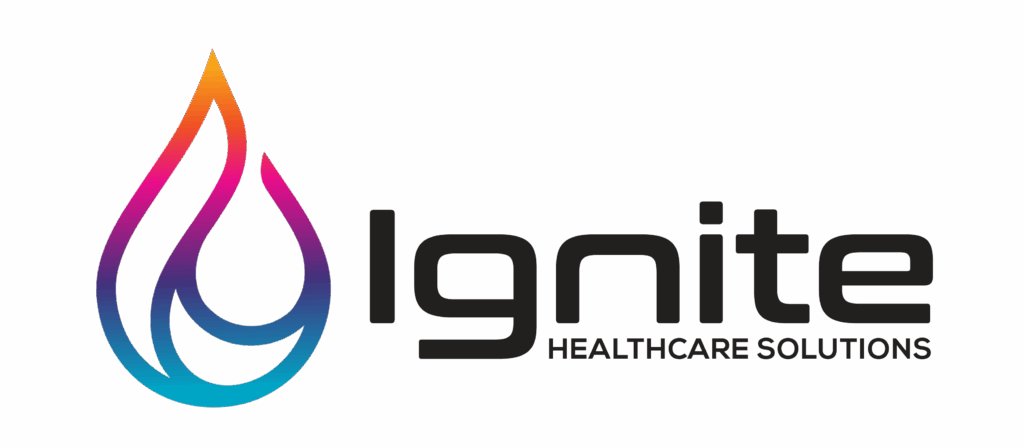In today’s healthcare environment, financial sustainability is more critical than ever. Having a strong Revenue Cycle Management (RCM) strategy isn’t just about keeping your practice operational—it’s about ensuring long-term success by optimizing cash flow, streamlining billing, and reducing claim denials. But how can healthcare organizations be sure that their RCM processes are effective and efficient? The answer lies in tracking the right Key Performance Indicators (KPIs), which serve as vital metrics for assessing the health of your revenue cycle. In this blog, we’ll explore the most important KPIs to track and explain how Ignite Healthcare Solutions can help you fine-tune these metrics to drive maximum financial performance.
Days in Accounts Receivable (A/R)
One of the most critical KPIs for any healthcare practice is Days in Accounts Receivable (A/R). This measures the average number of days it takes for your practice to collect payments owed by patients or insurance companies. If the number of days in A/R is low, it signals that your practice is efficient in collecting payments, ensuring cash flow remains steady. Conversely, a higher number of days in A/R may point to inefficiencies in billing processes or issues in the collection workflow, which can lead to financial strain.
At Ignite Healthcare Solutions, we focus on optimizing revenue cycle workflows to reduce days in A/R by identifying inefficiencies, enhancing collection processes, and implementing best practices to ensure payments are received as quickly as possible. By maintaining a lower number of days in A/R, your practice can avoid financial bottlenecks and improve overall cash flow, contributing to long-term stability.
Denial Rate
The Denial Rate is another key KPI that healthcare practices must track closely. It refers to the percentage of claims denied by payers after submission. A high denial rate can severely impact your practice’s revenue, as every denied claim represents delayed or lost income. Understanding the reasons behind claim denials is crucial to maintaining a healthy revenue cycle. Whether denials are caused by coding errors, incomplete documentation, or payer-specific requirements, tracking denial rates allows your practice to spot recurring issues and address them before they cause significant financial disruption.
Ignite Healthcare Solutions provides specialized denial management services, working with your practice to review denied claims, identify patterns, and implement corrective actions. Through root cause analysis and targeted training for staff, we help you reduce denial rates and minimize the time and resources spent on managing denied claims. This not only enhances your revenue but also allows your team to focus on providing quality patient care rather than chasing down payments.
Net Collection Rate
Another important KPI to track is the Net Collection Rate, which measures the percentage of payments collected out of the total payments expected. This metric offers a clear picture of your practice’s effectiveness in collecting the revenue it is owed, even after accounting for contractual allowances, bad debt, or other non-collectable amounts. A high Net Collection Rate indicates that your practice is efficiently capturing its owed revenue, contributing to a healthy financial standing.
At Ignite Healthcare Solutions, we collaborate with healthcare practices to maximize their Net Collection Rate by streamlining billing processes, improving coding accuracy, and enhancing patient communication. These efforts help practices capture as close to 100% of their expected revenue as possible, allowing them to maintain financial stability and reinvest in growth opportunities.
Cost to Collect
The Cost to Collect is a KPI that measures the total costs associated with the revenue cycle, including billing staff salaries, software expenses, and outsourced services, as a percentage of the total revenue collected. This metric helps you understand the financial efficiency of your revenue cycle operations. A lower Cost to Collect is preferable, as it indicates that your practice is operating efficiently without overextending its resources. By managing this KPI, your practice can minimize operational costs while maximizing revenue.
Ignite Healthcare Solutions offers strategic outsourcing solutions to help practices reduce their Cost to Collect by taking on key functions such as billing oversight, reporting, and RCM management. This allows healthcare providers to focus on patient care while ensuring that back-office functions are handled efficiently and cost-effectively. Through our Financial Scorecard, we track and monitor Cost to Collect, ensuring that your practice achieves optimal financial performance with fewer resource expenditures.
Patient Payment Rate
As high-deductible health plans become more common, collecting payments from patients has become increasingly important. The Patient Payment Rate measures the percentage of payments received directly from patients out of the total amount they are responsible for paying. This KPI is essential for tracking how effective your practice is at engaging patients and securing their financial contributions. If patient payments are not collected promptly or efficiently, your practice’s cash flow can suffer, and the burden on staff increases.
Ignite Healthcare Solutions understands the challenges of collecting patient payments, which is why we provide comprehensive solutions and coaching that include patient payment plans, automated payment reminders, and front-office training. These strategies improve patient payment collection rates by making it easier for patients to pay and ensuring that your staff can communicate payment policies effectively. By focusing on improving patient engagement and payment processes, your practice can secure a steady stream of patient payments, boosting revenue and reducing the risk of unpaid balances.
Revenue Per Encounter
Revenue Per Encounter is a valuable KPI that measures the average revenue generated from each patient visit. This metric helps you evaluate how financially efficient your services are and whether there are opportunities to increase revenue per patient interaction. By optimizing this KPI, you can ensure that your practice is maximizing the value of each patient visit without overburdening your staff or resources.
At Ignite, we offer advanced analytics and reporting tools that help you track Revenue Per Encounter and identify areas for improvement. Our team works closely with your practice to optimize coding, billing, and documentation processes, ensuring that each patient encounter is properly captured and billed for. Additionally, our analytics provide actionable insights that help your practice identify new revenue opportunities, allowing you to drive financial growth while maintaining the quality of care.
Financial Scorecard Offering
To ensure that your practice is tracking the right KPIs and making informed decisions, Ignite Healthcare Solutions offers a comprehensive financial scorecard service. This service tracks critical KPIs, including days in A/R, denial rate, net collection rate, cost to collect, patient payment rate, and revenue per encounter, among others. In addition to these key metrics, our Financial Scorecard provides insights into global and specialty performance by evaluating new receivables (charges, adjustments, payments, AR evaluation), realized volume (total visits, claim creation, gross revenue per claim), and realized utilization (calendar utilization by provider type).
We also offer a payer mix evaluation at the global, specialty, and clinic levels, as well as comprehensive accounts receivable evaluation across these tiers. Also, the scorecard includes a detailed denials evaluation at global, specialty, and provider levels, enabling practices to pinpoint and resolve issues that may be affecting their revenue.
For a deeper dive, our service includes a monthly payer audit, which assesses over/underpayments by CPT code by payer, evaluates adjustments to fee schedules and expected allowables, and identifies inefficiencies at the coding or provider level. With real-time reporting, trend analysis, and actionable recommendations, our scorecard equips healthcare practices with the tools to optimize their revenue cycle, improve cash flow, reduce costs, and enhance overall financial performance. Whether your goal is to fine-tune patient collections or address payer inefficiencies, Ignite Healthcare Solutions has the expertise to help you achieve these objectives and drive long-term success.
Conclusion
In an increasingly competitive healthcare environment, tracking the right RCM KPIs is essential for ensuring financial stability and growth. By monitoring these KPIs and making data-driven decisions, your practice can improve its revenue cycle efficiency, reduce operational costs, and enhance overall financial performance. Ignite Healthcare Solutions is here to help you achieve these goals through our industry expertise, comprehensive Financial Scorecard service, and tailored RCM solutions. From denial management to patient payment collections, we are your trusted partner in optimizing every aspect of your revenue cycle and driving long-term success. Let Ignite Healthcare Solutions guide your practice toward a brighter, more financially secure future. Contact us at info@ignitehs.com today!



